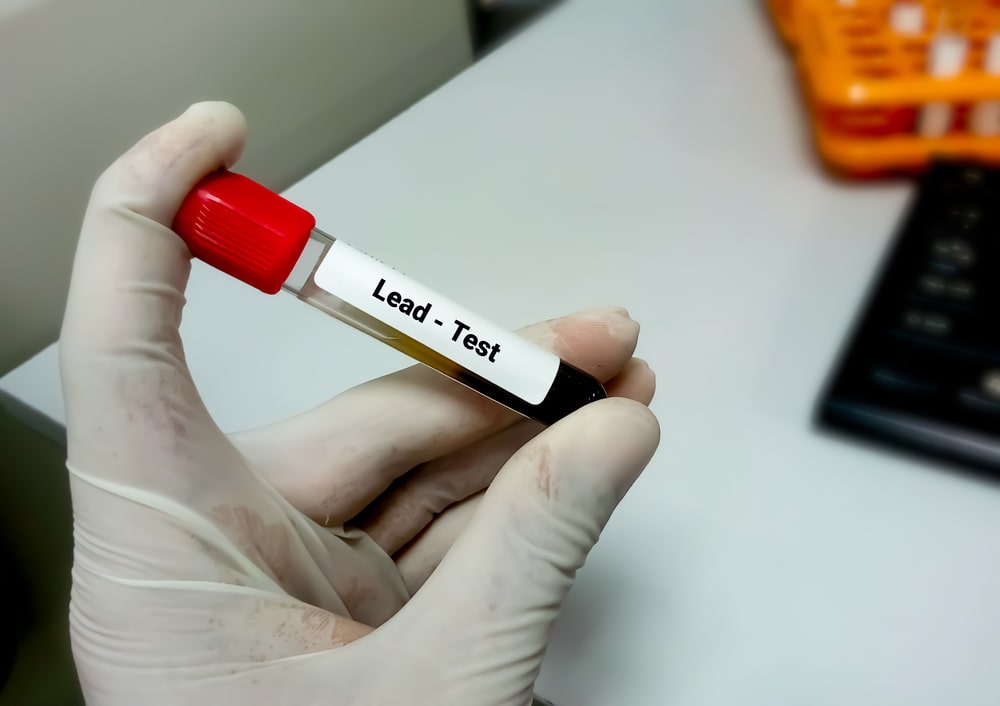Over 1.2 million children in the U.S. have suffered from lead toxicity. While there was a sweeping ban in 1978 that made lead paint illegal, the toxic metal can still be found in many homes. High exposure from lead can cause lead poisoning, which is especially dangerous to children and pregnant women. This article will provide you with all the basics you need to know about lead toxicity.
Where Is Lead Found?
Lead was so widely used in the past that it was often called the “miracle metal.” It was abundant, easy to melt, and incredibly malleable. Lead paint was widely used because it would dry quicker, have better durability, and have better resistance to corrosion. The only problem with lead is that it can be easily absorbed by the human body, causing lead poisoning. In 1978, U.S. regulators banned lead paint and other lead-infused products often found in the home.
However, the lead paint that was already on home walls didn’t magically disappear. One of the biggest lead toxicity risks comes from “legacy sources.” For homes that were built before 1978, lead testing and abatement are recommended.
Lead paint isn’t the only culprit of legacy sourced toxicity. Lead can also be found in old toys, pipes, and packaging. These products would erode and break down, possibly adding lead toxicity to common dust and the soil. Additionally, leaded gasoline used to be the norm, which would spew lead particles into the air. While leaded gasoline has been made illegal for decades, the discharged lead hasn’t gone anywhere unless a proper abatement treatment was done.
While lead products were largely banned in the 70s, they weren’t made completely illegal. Lead can still be found in some forms of pottery, bullets, automotive parts, batteries, and construction materials. Additionally, imported goods from countries with weaker regulations can contain lead. This is particularly true with toys, folk medicines, cosmetics, and candies containing the ingredient Tamarind. Both legacy sources of lead and new sources of lead can cause lead toxicity if absorbed by the body.
Who Is at Risk of Lead Poisoning?
Everyone is at risk of lead poisoning, but children and pregnant women are particularly vulnerable. Specifically, children under the age of 6 are at the greatest risk. They are more likely to be exposed to lead given that they chew paint chips or play in contaminated dust or soil that may be near the home. Additionally, children are more vulnerable to the damages of lead poisoning and can suffer permanent neurological damage.
For pregnant women, lead can easily pass from the mother to the fetus or a breastfeeding infant. Even if a mother isn’t displaying symptoms of lead poisoning, toxicity can still be passed onto the fetus and breastfeeding infants.
Symptoms of Lead Poisoning
Symptoms will vary based on the individual’s age and pregnancy status. For adults who aren’t pregnant, common symptoms include headaches, high blood pressure, muscle pain, confusion, and mood disorders. Pregnant women will have similar symptoms, but additional issues can be passed on to newborns. These symptoms include premature birth, low birth weight, and stunted growth.
Children who have been exposed to lead will have more health problems that may be irreversible. This can include learning difficulties, developmental delay, irritability, weight loss, sluggishness, constant fatigue, vomiting, constipation, abdominal pain, and seizures. The most common type of exposure for children happens during playtime. Unattended toddlers can eat paint chips and contaminated soil or dust.
How to Prevent Lead Poisoning
Abatement
The best way to prevent lead poisoning is by limiting exposure. For older homes, this can best be done through abatement. Recommended abatement procedures to minimize lead exposure will vary from home to home, but generally entails four options: enclose, replace, remove, or encapsulate.
- Enclosure: The easiest and involves covering lead paint with a wall covering. This is often done on large surfaces. ƒ
- Replacement: Practical for removable pieces, such as doors or molding. The contained piece is simply replaced with a newer, lead-free replacement.
- Removal: Removal of lead paint can be done, but should only be handled by a licensed professional. Dust and debris from lead paint removal must be contained, and a certified professional can do this safely.
- Encapsulation: The last method of abatement is encapsulation. This involves coating and sealing affected areas to minimize the risk of exposure.
Housekeeping
In addition to abatement, good housekeeping can help minimize the risk of exposure. Simple things like cleaning dusty surfaces, such as furniture and windowsills, can help reduce the risk of lead particles in the air. Additionally, removing one’s shoes before entering the home can reduce the risk of lead entering the home. This is especially true for work boots on construction sites or for those who work in the automotive industry.
Hygiene
Good hygiene can also help, especially for children and those who garden. Washing hands after outdoor playing or gardening can help remove lead from hands, stopping hand-to-mouth transfers of contaminated dust or soil. Washing toys regularly and washing hands before mealtime and bedtime can also help.
Diet
A healthy diet can help your body fight off lead absorption. Specifically, calcium, iron, and vitamin C may reduce lead absorption vulnerabilities.
Calcium-rich foods include dairy, soy, green leafy vegetables, salmon, and sardines. Spinach is particularly beneficial, because it is rich in both calcium and iron. Other good iron sources include lean red meats, beans, lentils, potatoes, and some cereals that have been iron-fortified.
Vitamin C helps the body absorb iron better, and is thus helpful in fighting off lead absorption. You can find Vitamin C not only in citrus fruits, but also in kiwis, strawberries, melons, broccoli, and peppers.
Lastly, garlic has been found to be effective in reducing blood and tissue lead concentrations. However, the study that confirmed this finding administered 3 daily doses of 1,200 micrograms of garlic. Unless you eat garlic every day, taking garlic tablets will probably be the most effective solution.

Keep Your Home Safe
While old homes do present a risk to lead poisoning, steps can be taken to minimize these risks. Abatement, cleaning, and diet are often sufficient in keeping a household safe from lead poisoning. If you believe you or a loved one is suffering from lead poisoning, consult with your doctor. If you need a lead abatement treatment in your home, it is recommended to hire a licensed professional. Contact ZOTApro today to learn more!



